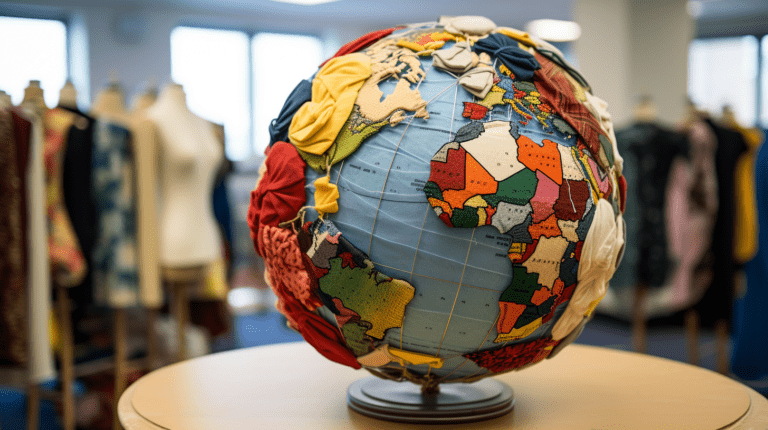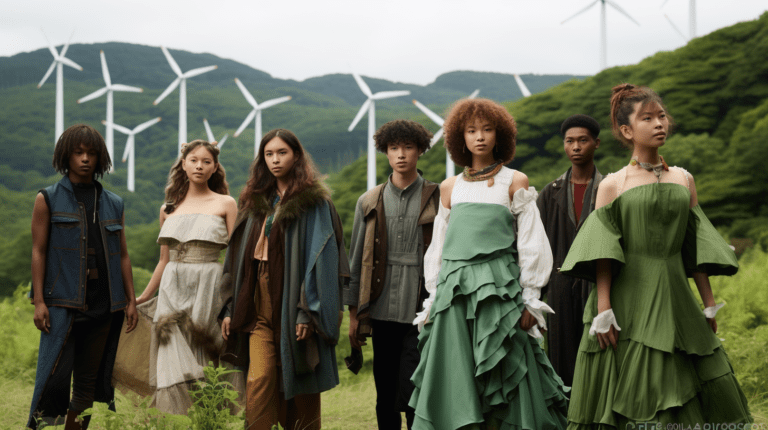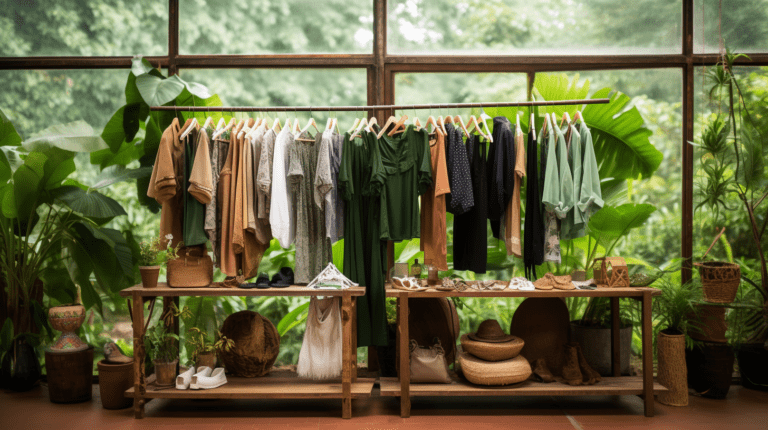Sustainable Fashion Innovation – You might think that sustainable fashion is just a trendy buzzword, but it’s rapidly becoming a necessity in our world. The fashion industry, long notorious for its environmental impact and unethical labor practices, must evolve to meet the demands of today’s conscious consumer.
You are part of this change, seeking out innovative solutions that not only look good but do good too. This article will explore how innovation is driving sustainability in fashion – from materials and production methods to packaging and distribution.
We’ll also delve into ethical labor practices and spotlight brands leading the way in this revolution. Get ready to discover how you can wield your purchasing power for a better future, embracing sustainable fashion as more than just a trend but as an integral part of our shared responsibility towards the planet.
Key Takeaways – Sustainable Fashion Innovation
- Sustainable fashion innovation focuses on using eco-friendly materials such as hemp, bamboo, organic cotton, silk, and recycled fibers.
- Innovative production techniques in sustainable fashion include recycling, upcycling, and waterless dyeing.
- Eco-friendly packaging and distribution strategies involve the use of recycled designs, biodegradable materials, carbon offset programs, and digital receipts.
- Ethical labor practices, such as fair wages and safe working conditions, are essential in sustainable fashion.
The Need for Sustainability in Fashion – Sustainable Fashion Innovation
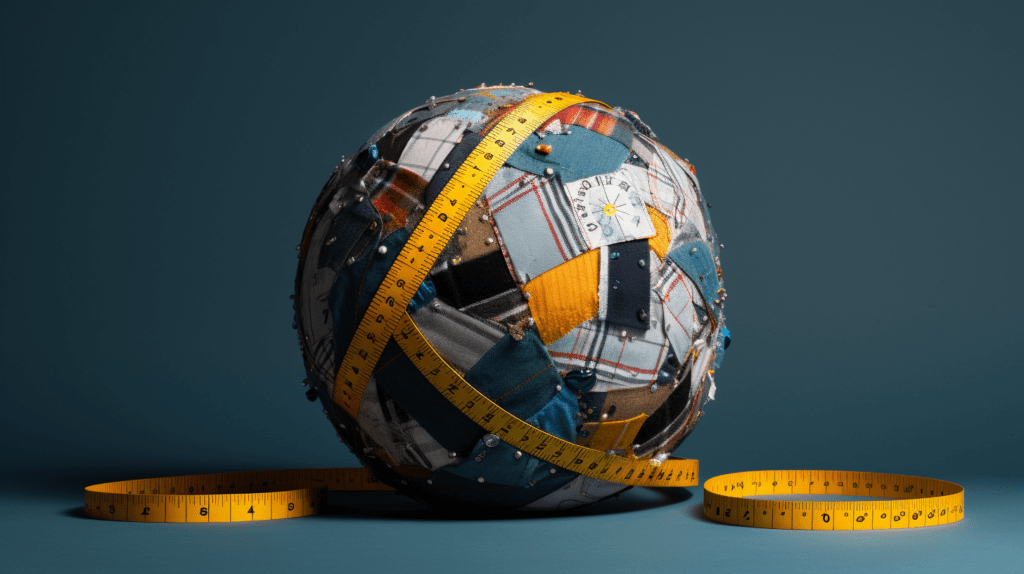
You’re likely aware of the pressing need for sustainability in fashion, an industry that’s notorious for its significant environmental impact. But have you ever thought about how these concerns tie into your desire for power and influence? It’s not just about looking good but also doing good for our planet.
The world of fashion is riddled with greenwashing dangers, where companies tout eco-friendly practices but fall short on actual implementation. This deceptive marketing strategy can mislead consumers like you who are striving to make environmentally-conscious choices. It’s high time we held these corporations accountable.
Consider the environmental cost of a single cotton t-shirt: from water consumption during cultivation to energy expenditure in manufacturing and transportation; it’s a hefty toll on our precious resources. And let’s not forget about the waste generated when we discard clothes after a few wears, contributing to overflowing landfills across the globe.
But here lies your power: every purchase you make sends a message about what you value. Demand transparency from brands, question their sustainability claims, and support those who genuinely prioritize eco-friendly practices. Remember that real change comes from collective action; together we can push this industry towards true sustainability.
Innovation is key to transforming fashion into a force for good. The next frontier in this journey is exploring sustainable materials — alternatives that are kinder to our planet while still delivering the style and quality you crave. So let us continue by delving deeper into these exciting alternatives.
Sustainable Materials – Sustainable Fashion Innovation

Imagine slipping into a luxuriously soft t-shirt made entirely from recycled plastic bottles, or lacing up shoes crafted from responsibly harvested cork. The feel of these materials against your skin isn’t just comfortable but also empowering because every fiber has been intentionally chosen for its minimal impact on the environment. This is sustainable fashion innovation at its finest.
Look around you. Biodegradable textiles and recycled fibers are taking over the fashion industry. These eco-friendly options aren’t only stylish but also significantly cut down on waste, making them the ultimate power move towards a more sustainable future.
Take biodegradable textiles for instance: they return to the earth after their useful life without leaving any harmful residue behind. Materials like hemp, bamboo, organic cotton, and even silk can be processed in such a way that they break down naturally when discarded. They’re not just good for Mother Earth; they’re good for your wardrobe too.
Recycled fibers bring a new lease of life to waste materials which would otherwise end up in landfills or oceans. Consider this: It takes about 12 plastic bottles to make one pound of polyester fiber – enough for a t-shirt or scarf! So next time you wear something made from recycled polyester, remember you’ve helped remove some plastic waste from nature’s path.
As we continue to push boundaries in sustainability, we’re seeing an exciting shift towards innovative practices that combine environmental consciousness with style and quality. You’re no longer choosing between looking good and doing good; you can do both.
Ready yourself as we delve deeper into the world of sustainable fashion innovation, exploring how innovative production techniques are redefining what it means to be truly stylish while caring for our planet.
Innovative Production Techniques – Sustainable Fashion Innovation
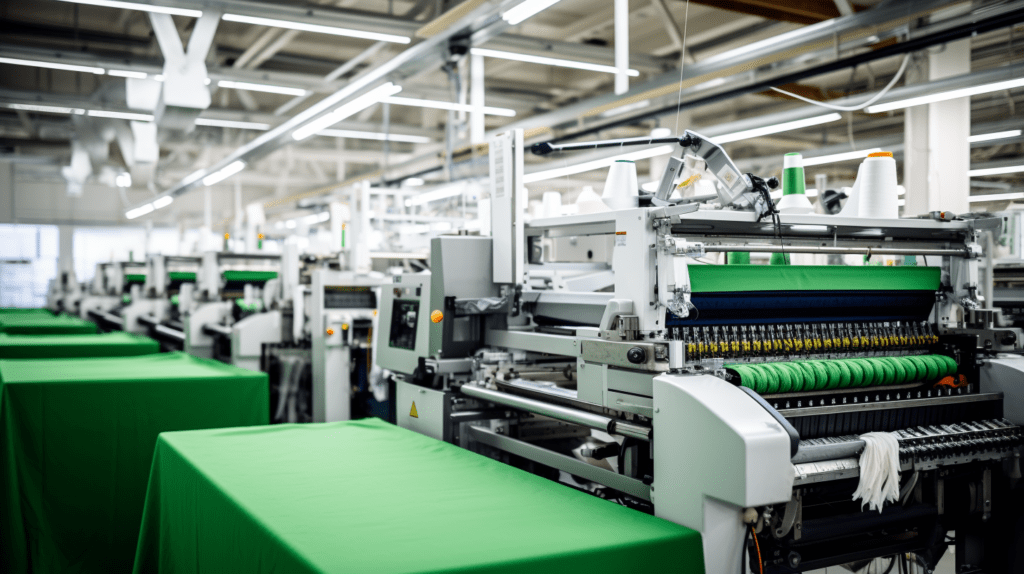
Did you know that 95% of discarded clothing can be recycled or upcycled? It’s time to delve into the remarkable world of cutting-edge production techniques that are reshaping our wardrobe while caring for our planet.
Let’s start with recycled textiles. These aren’t just old clothes repurposed, but also comprise materials like plastic bottles and fishing nets transformed into high-quality yarns. This ingenious technique not only reduces waste but also demands less energy during production, contributing to a significant decrease in carbon emissions.
But what about the colors that breathe life into our garments? Traditional dyeing processes consume vast amounts of water and often discharge toxic chemicals. Enter waterless dyeing, a revolutionary technique that uses supercritical CO2 instead of water. The process is closed-loop, which means the CO2 is captured back after use, leaving behind no harmful residues and saving precious resources.
These innovative methods are more than just eco-friendly alternatives; they represent a paradigm shift in fashion production. They challenge traditional practices, demanding change while proving it’s possible to have stylish clothing without compromising Earth’s health.
As we celebrate these advancements in sustainable innovation, let’s remember: this journey doesn’t stop at production. Our next focus must be on packaging and distribution—achieving sustainability across every stage of a garment’s lifecycle requires commitment from start to finish. And as influential consumers with power over market trends, your role is pivotal in accelerating this transition towards truly sustainable fashion – starting with being conscious about what comes next: eco-friendly packaging and distribution practices.
Eco-friendly Packaging and Distribution – Sustainable Fashion Innovation

Now, let’s unpack the idea of eco-friendly packaging and distribution, because it’s not just about what you wear, but also how it gets to you.
When you purchase a product from a sustainable fashion brand, every detail counts – including how that item is packaged and delivered.
In fact, innovative brands are increasingly implementing green shipping solutions to minimize their carbon footprint. They’re using:
- Recycled packaging designs
- Biodegradable materials
- Carbon offset programs for delivery vehicles
- Digital receipts instead of paper ones
Recycled packaging designs involve re-using materials like cardboard and paper rather than producing new ones – this saves on resources and reduces waste. Biodegradable materials break down in nature without leaving any toxic residue behind – they include things like cornstarch or mushroom-based packing peanuts. Carbon offset programs allow companies to invest in environmental projects around the world to balance out their own emissions – think wind farms or tree planting initiatives. Lastly, digital receipts save trees by reducing the demand for paper.
This isn’t just good for our planet; it’s also smart business strategy. Consumers are becoming more discerning about where they spend their money and are actively seeking out brands with strong environmental credentials. By integrating these practices into your operations, you’ll not only reduce your impact on the environment but also enhance your brand’s reputation and appeal.
Yet sustainability doesn’t stop at innovative production techniques or green shipping solutions. The power of change is also in treating people right throughout the entire supply chain process. That brings us to another essential facet of sustainable fashion innovation: ethical labor practices.
Ethical Labor Practices – Sustainable Fashion Innovation
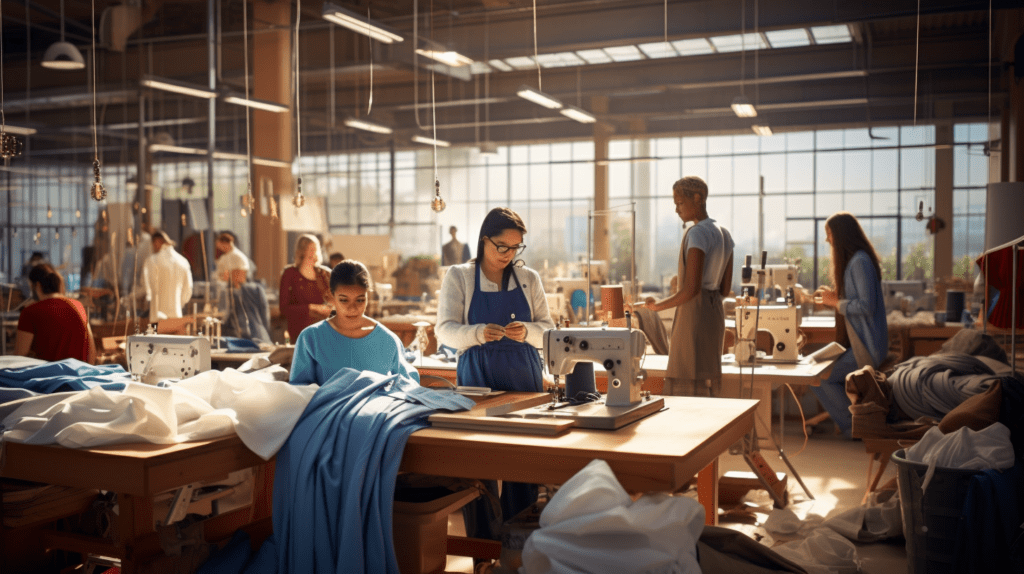
As you venture further into the realm of sustainable fashion, consider the importance of ethical labor practices. Fair Trade Fashion isn’t just a label but a commitment to empowering producers and promoting sustainable livelihoods.
Moreover, supporting local artisans not only fuels your local economy but also reduces carbon footprints by eliminating long-distance transportation.
Fair Trade Fashion
By choosing fair trade fashion, you’re supporting a system that ensures workers in developing countries receive equitable wages and work under safe conditions, thereby contributing to the sustainability of the global fashion industry.
This innovative practice isn’t just about being trendy; it’s about understanding how trade policies impact the lives of people who make your clothes.
It’s time for a shift in power dynamics, where consumer awareness becomes a driving force behind sustainable fashion choices. By opting for fair trade items, you’re effectively voting with your dollars to promote ethical labor practices and environmentally friendly production techniques.
As we move forward into this new era of conscious consumption, let’s turn our attention to another potent aspect of sustainable fashion: showcasing and promoting local artisans whose skills contribute immensely to this movement.
Promoting Local Artisans
Promoting local artisans isn’t just a passing trend, it’s a meaningful stride towards economic empowerment – because, let’s face it, every cloud has a silver lining.
This practice is not just about fashion; it’s about Artisan Empowerment and preserving cultural heritage through Craft Preservation.
When you choose to support local artisans, you’re investing in communities, helping them thrive and maintain their unique skills.
By patronizing artisan-made products, you’re pushing for an environmentally-friendly alternative to mass production.
The positive ripple effect of your choice can influence the broader fashion industry to adopt more sustainable practices.
As we move forward on this path of conscious consumerism, remember that change starts with us.
Let’s discover how some sustainable fashion brands are leading the way in integrating these principles into their business models.
Sustainable Fashion Brands – Sustainable Fashion Innovation
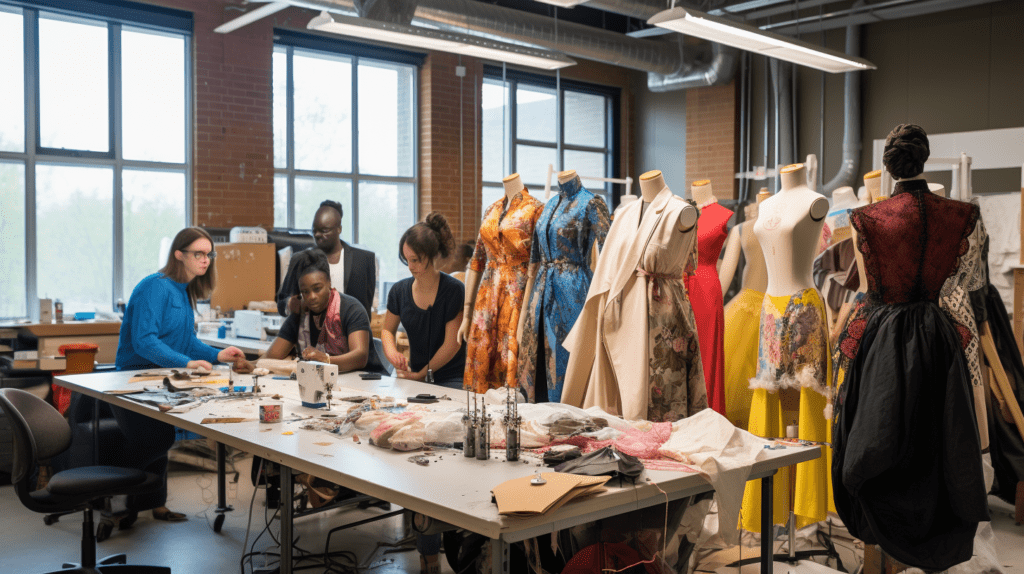
You’ll be amazed to find a growing number of fashion brands championing sustainability, offering stylish designs that don’t compromise our planet’s health. With the rise of eco-conscious consumers, these brands are stepping up their game and innovating ways to produce fashion sustainably. However, it’s important for you as a consumer to navigate around greenwashing pitfalls – businesses falsely claiming sustainable practices.
Here are three sustainable fashion brands leading the way:
| Brand | Sustainable Practice | Unique Selling Point |
|---|---|---|
| Patagonia | Uses recycled materials and organic cotton | Transparent supply chain |
| Eileen Fisher | Emphasizes on recycling clothes and zero waste policy | Timeless designs |
| Stella McCartney | Doesn’t use leather or fur in products | Luxury vegan brand |
These brands not only prioritize low-impact materials but also invest in fashion recycling methods making them stand out in an industry often criticized for its environmental impact. They’re defying norms, proving that style doesn’t have to come at the expense of our planet.
Patagonia uses recycled polyester and organic cotton, reducing water usage and eliminating pesticides from their production process. Eileen Fisher has a take-back program where customers can return old pieces for store credit – they then recycle these items into new garments. Stella McCartney is well-known as a luxury vegan brand, refusing to use leather or fur in her designs.
As we move forward towards a greener future, remember power lies within your choices. Your purchase decisions can drive demand for more sustainable options in the fashion industry. Leverage this power wisely when choosing what clothes you wear next time! Let’s explore further about how we shape the future of sustainable fashion together.
The Future of Sustainable Fashion – Sustainable Fashion Innovation

Imagine shaping the future of clothing, just by being mindful about what you choose to hang in your closet! Yes, sustainable fashion isn’t just a passing trend; it’s an innovative movement towards betterment. You have the power to influence this change with your choices and actions.
Firstly, consumer awareness plays a pivotal role in this sea-change. Become educated about where your clothes come from and how they’re made. Look for brands that prioritize eco-friendly materials, fair labor practices, and minimal waste generation. Your buying decisions can really pave the way for a more sustainable fashion industry.
Moreover, you can advocate for stronger fashion legislation. Laws regulating production methods and waste disposal could drastically reduce the environmental impact of fashion companies worldwide. They say knowledge is power – use yours to push for policy changes that will make sustainability not just an option but a requirement in fashion.
The future of sustainable fashion also lies within innovation itself – new fabrics made from recycled or bio-based materials, cutting-edge manufacturing processes that are less wasteful than traditional ones, designs that are timeless rather than trendy – all these innovations are helping to redefine ‘fashion’.
You don’t need superpowers to help shape the future of sustainable fashion. By becoming more aware as consumers and advocating for stronger legislation in the industry, we can drive significant change together. Your wardrobe choices today hold immense potential power – harness it wisely! Remember that every small act counts when it comes to creating a greener planet for us all.
Frequently Asked Questions
How can consumers contribute to promoting sustainable fashion innovation?
You can contribute to promoting sustainable fashion innovation by throwing your weight behind consumer education and fashion recycling.
Knowledge empowers you to make environmentally-conscious choices, like supporting brands that prioritize eco-friendly materials and practices.
By recycling old clothes, you’re not just reducing waste but also promoting a circular economy.
Your purchasing power sends a strong message to the industry – demand for sustainability drives innovation.
So remember, your choice today shapes the fashion of tomorrow.
What are the common misconceptions about sustainable fashion?
Common myths about sustainable fashion often include the belief that it’s expensive and lacks style. However, these are misconceptions. The truth is, greenwashing perception can make it seem as if going green means sacrificing on quality or design.
But, you’ll find a variety of stylish, affordable options in the sustainable fashion market. It’s about making well-informed choices and not letting myths deter your power to influence positive change in this industry.
Are there any trade-offs or disadvantages in implementing sustainable fashion practices?
Yes, there are trade-offs in implementing sustainable fashion practices.
One key disadvantage is the cost implications. Producing eco-friendly garments often requires pricier materials and ethical labor, which can increase overall production costs.
Additionally, sustainable fashion involves slow production to reduce waste and pollution. This might not meet fast-paced consumer demands.
However, remember that this approach sustains our planet’s health and future generations’ wellbeing—a powerful legacy worth investing in!
How are governments and regulatory bodies supporting sustainable fashion innovation?
You may be wondering how governments and regulatory bodies are stepping up. They’re creating green incentives that reward sustainable practices through policy impact. They set regulations encouraging manufacturers to reduce waste and adopt eco-friendly production methods.
In addition, grants are offered for research in sustainable textiles. This not only boosts the economy but safeguards our planet too.
So, while the power is in your hands, remember these entities are playing their part as well.
How is technology being used to advance the cause of sustainable fashion?
You’re witnessing the rise of tech-driven recycling and innovative materials in the fashion industry.
Breakthroughs in technology are enabling brands to recycle old textiles into new, reducing waste significantly.
Innovative materials like bio-fabricated leather or recycled plastic are also making waves, offering stylish yet sustainable alternatives.
This tech-forward movement empowers you to be environmentally-conscious while still exuding power and style, pioneering a future where fashion and sustainability coexist seamlessly.
Conclusion
So, you’ve journeyed through the world of sustainable fashion innovation. You’ve seen how we can weave change with sustainable materials and innovative techniques, package with care for our planet, and ensure ethical work conditions.
You’ve witnessed brands leading this green revolution. Now it’s your turn, dear reader – to champion these practices and shape a greener future in fashion.
The runway is yours; stride forward with conviction! Read more on Sustainable Fashion Innovation.


